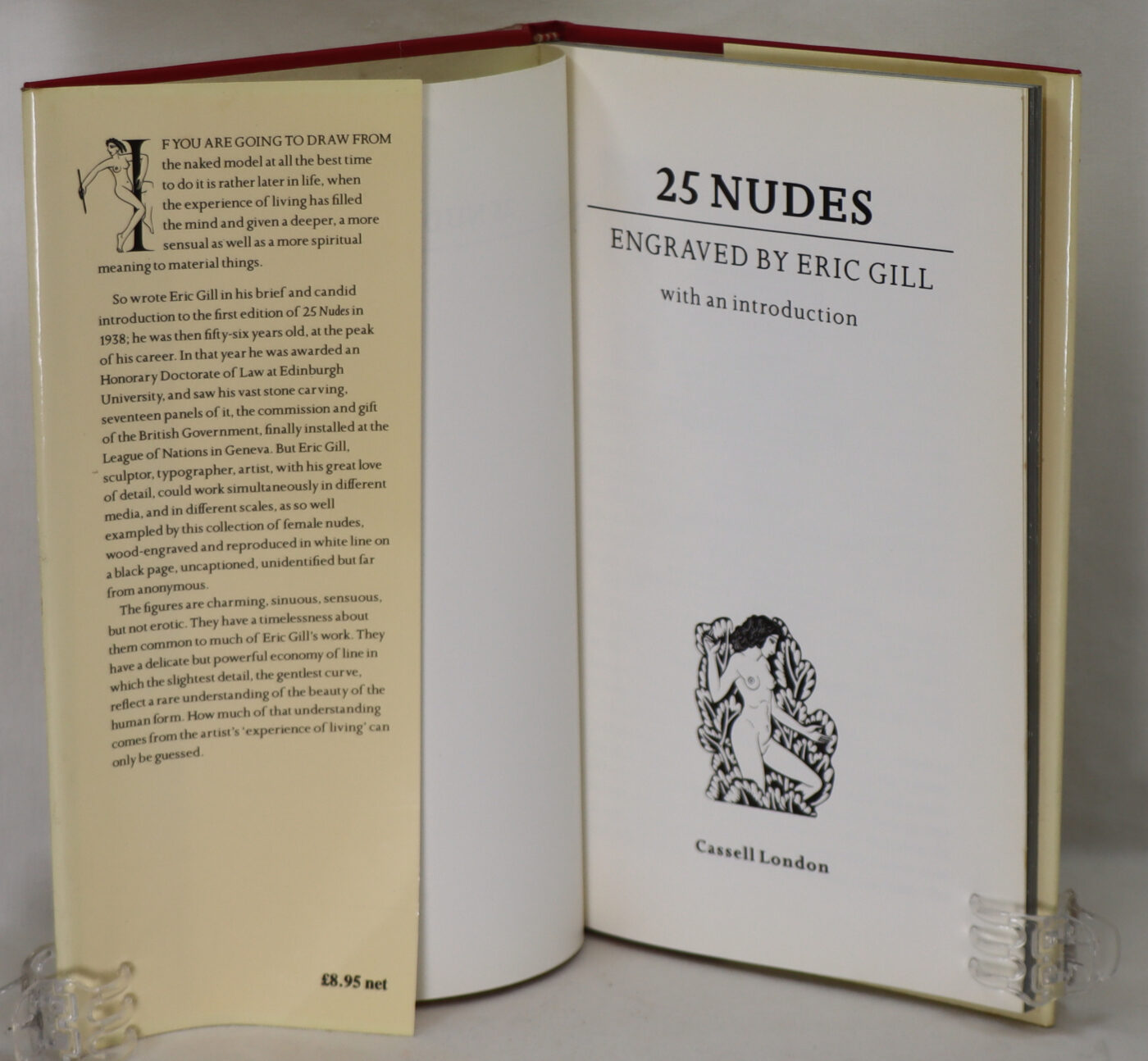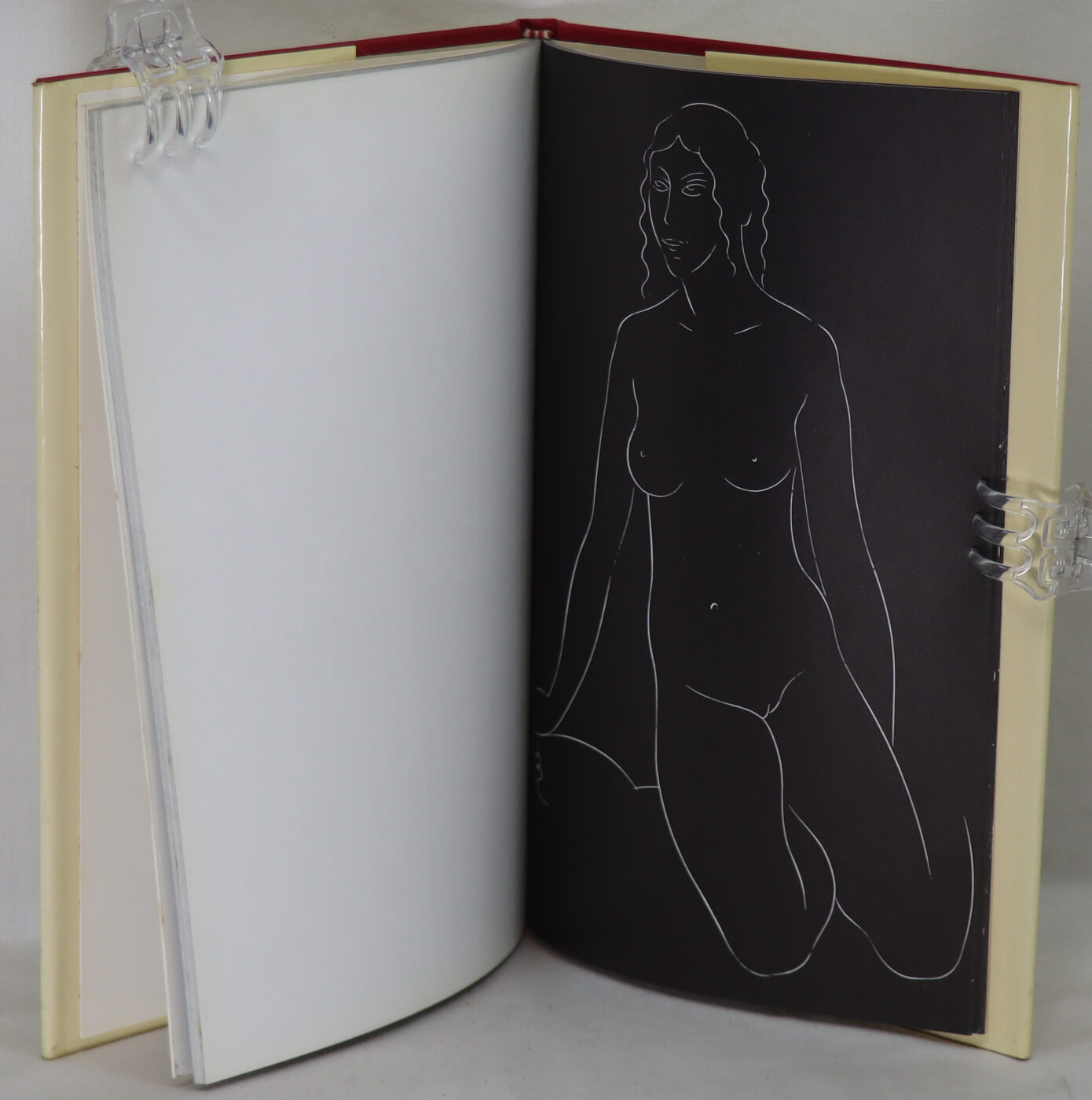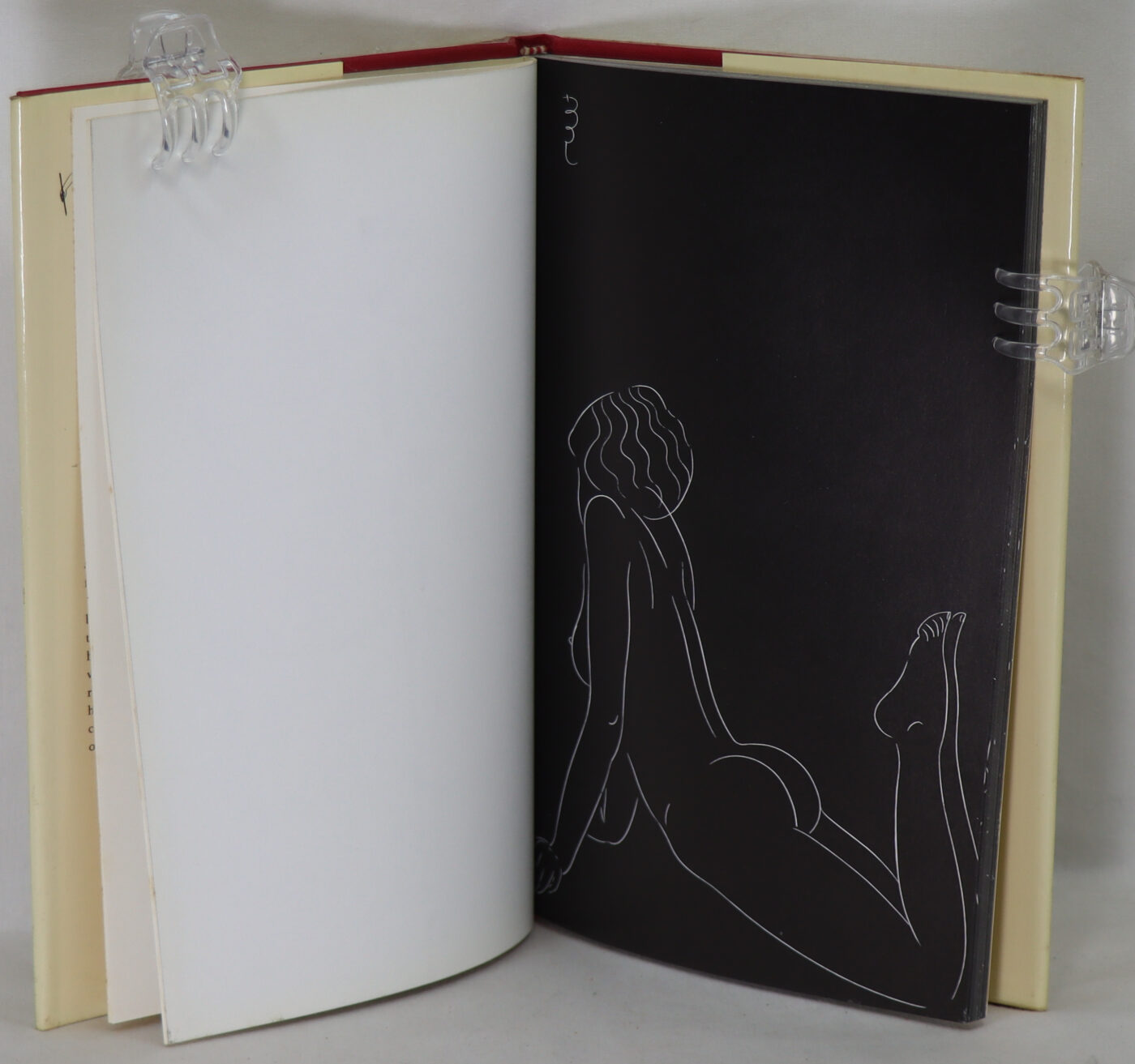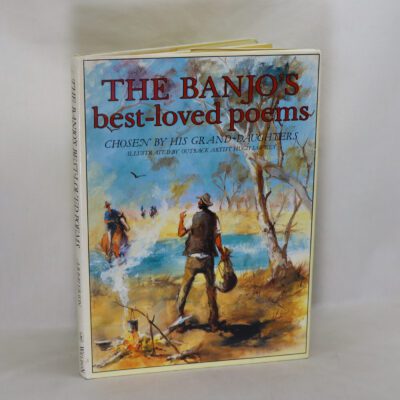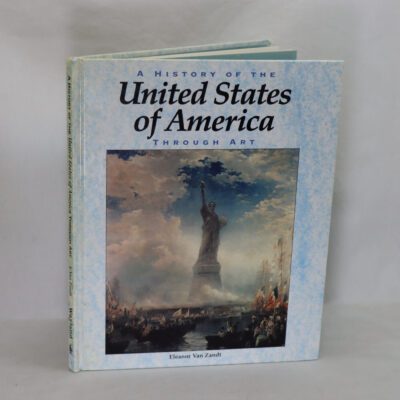Eric Gill. 25 Nudes.
By Eric Gill
ISBN: 9781999855796
Printed: 1988
Publisher: Cassell. London
| Dimensions | 15 × 23 × 1 cm |
|---|---|
| Language |
Language: English
Size (cminches): 15 x 23 x 1
Condition: Fine (See explanation of ratings)
Your items
Item information
Description
In the original dust jacket. Red cloth binding with gilt title on the spine.
We provide an in-depth photographic presentation of this item to stimulate your feeling and touch. More traditional book descriptions are immediately available
- Note: This book carries a £5.00 discount to those that subscribe to the F.B.A. mailing list
For conditions please view our photographs. 25 engraved plates of nudes. Near fine copy. Eric Gill’s charming, sinuous and sensuous nudes. First published in 1938. This is a superb copy.
“There are actually 26 engravings by Eric Gill (27 if you count the initial letter in the Introduction) in this book. The 26th does not belie the title of 25 Nudes as it is simply an engraving of hands thrown in for good measure”. A very good copy. Gill did not pass through the typical art school course of training, and so did not regard ‘life’ drawing as an essential foundation. He came to it, in middle age, as an activity to be enjoyed for its own sake. Further, he did not care for professional models, and preferred friends to pose for him. The model for some of these studies was Beatrice Warde, the typographer and associate of the Monotype Corporation. In their total reliance on white line, these engravings are extraordinary achievements. As Robert Speaight has written, the contours look as if they could ‘burst into flame’.
Arthur Eric Rowton Gill ARA RDI (22 February 1882 – 17 November 1940) was an English sculptor, letter cutter, typeface designer, and printmaker. Although the Oxford Dictionary of National Biography describes Gill as “the greatest artist-craftsman of the twentieth century: a letter-cutter and type designer of genius”, he is also a figure of considerable controversy following the revelations of his sexual abuse of two of his daughters and of his pet dog.
Gill was born in Brighton and grew up in Chichester, where he attended the local college before moving to London. There he became an apprentice with a firm of ecclesiastical architects and took evening classes in stone masonry and calligraphy. Gill abandoned his architectural training and set up a business cutting memorial inscriptions for buildings and headstones. He also began designing chapter headings and title pages for books.
As a young man, Gill was a member of the Fabian Society, but later resigned. Initially identifying with the Arts and Crafts Movement, by 1907 he was lecturing and campaigning against the movement’s perceived failings. He became a Roman Catholic in 1913 and remained so for the rest of his life. Gill established a succession of craft communities, each with a chapel at its centre and with an emphasis on manual labour as opposed to more modern industrial methods. The first of these communities was at Ditchling in Sussex, where Gill established The Guild of St Joseph and St Dominic for Catholic craftsmen. Many members of the Guild, including Gill, were also members of the Third Order of Saint Dominic, a lay division of the Dominican Order. At Ditchling, Gill and his assistants created several war memorials including those at Chirk in north Wales and at Trumpington near Cambridge, along with numerous works on religious subjects.
In 1924, the Gill family left Ditchling and moved to an isolated, disused monastery at Capel-y-ffin in the Black Mountains of Wales. The isolation of Capel-y-ffin suited Gill’s wish to distance himself from what he regarded as an increasingly secular and industrialised society, and his time there proved to be among the most productive of his artistic career. At Capel, Gill made the sculptures The Sleeping Christ (1925), Deposition (1925), and Mankind (1927). He created engravings for a series of books published by the Golden Cockerel Press considered among the finest of their kind, and it was at Capel that he designed the typefaces Perpetua, Gill Sans, and Solus. After four years at Capel, Gill and his family moved into a quadrangle of properties at Speen in Buckinghamshire. From there, in the last decade of his life, Gill became an architectural sculptor of some fame, creating large, high-profile works for central London buildings, including both the headquarters of the BBC and the forerunner of London Underground. His mammoth frieze The Creation of Man was the British Government’s gift to the new League of Nations building in Geneva. Despite failing health Gill was active as a sculptor until the last weeks of his life, leaving several works to be completed by his assistants after his death.
Gill was a prolific writer on religious and social matters, with some 300 printed works including books and pamphlets to his name. He frequently courted controversy with his opposition to industrialisation, modern commerce, and the use of machinery in both the home and the workplace. In the years preceding World War II, he embraced pacifism and left-wing causes.
Note: in the 1930’s my father who shared Gill’s love of typefaces and drawings knew Gill. Unfortunately, my father’s extensive collection of Gill’s original drawings was destroyed. Martin Frost September 2025
Want to know more about this item?
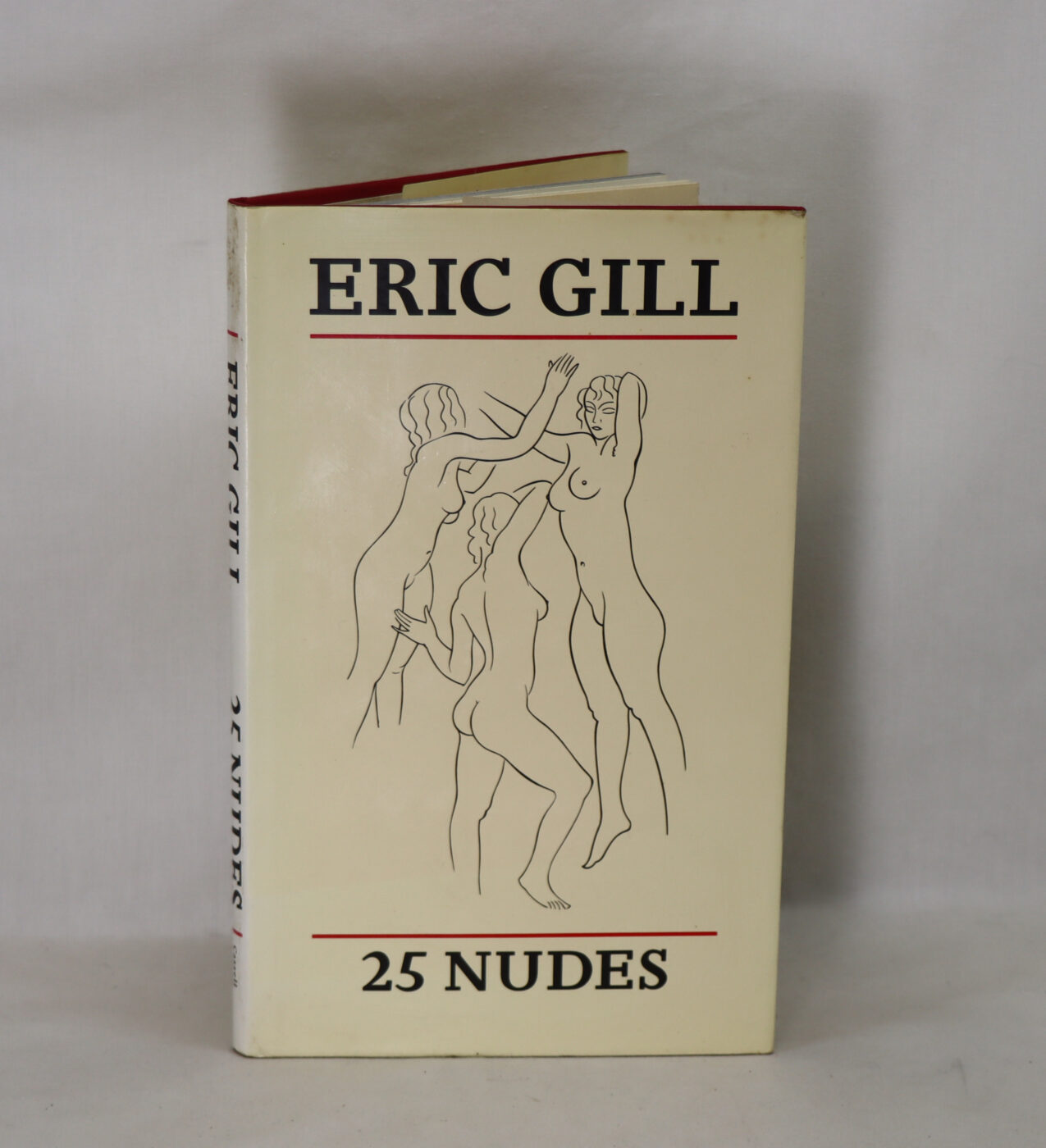
Related products
Share this Page with a friend

